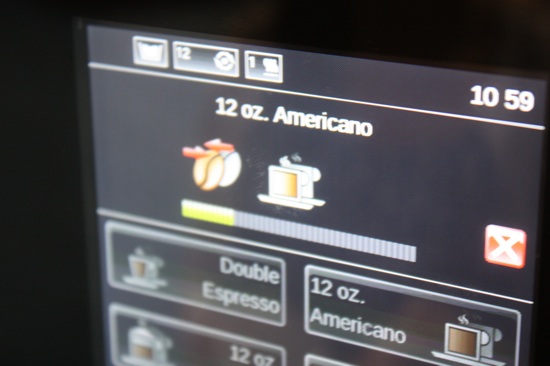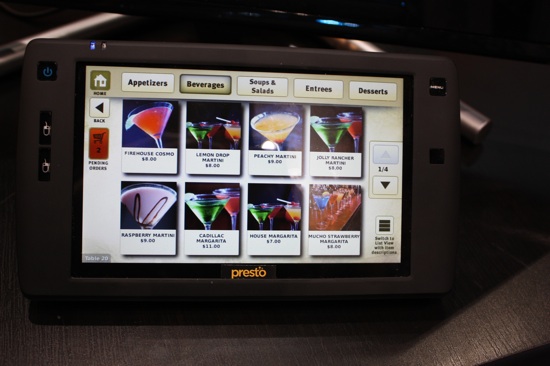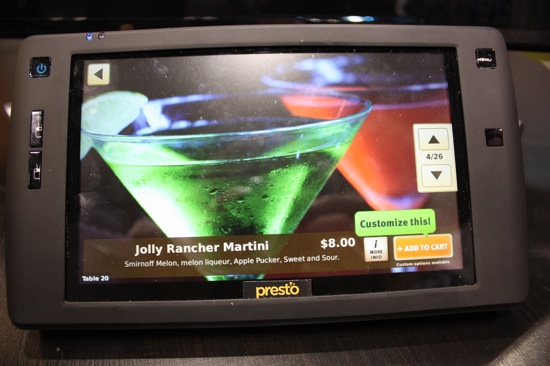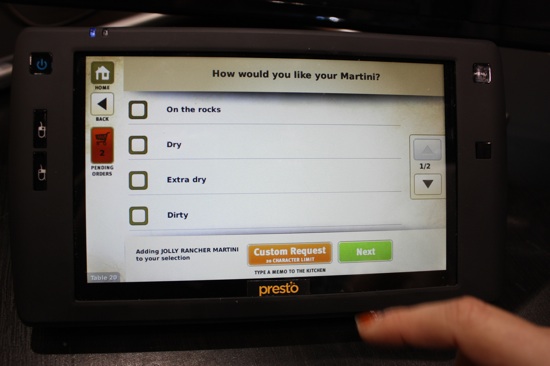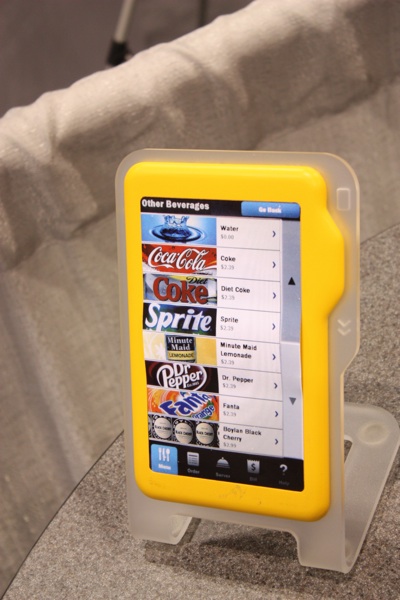iPads, iPhones and Touchscreens, Oh My! Is Technology Good for Diners?
By Anthony Todd in Food on Jun 6, 2011 6:20PM
During the NRA show, while we were giggling over fake food and silly signs, we also noticed one actual trend - everything seemed to be going electronic. There were so many different types of iPhone and iPad apps, wireless devices and techno-geek gadgets that we hardly knew where to turn, and yet when we did a little research and a few interviews, we weren't sure that most of them were actually useful. In fact, we suspect that while some of them may make dining faster and more "convenient" for some, most of them will lower the quality of the experience of eating out. But, you can bet they will be coming to a restaurant near you.
The devices fell into a few different categories. The least offensive (and most practical) were updates to existing reservation and Point of Sale systems, often using prettier or more intuitive interfaces. For instance, we fell instantly in love with a number of companies that promised to update the standard OpenTable-driven reservation system by adding large, red markers indicating that a party has been waiting for a table for a long time. But these sorts of updates don't promise any systemic changes in the dining experience.
Things start to get interesting when tasks that have been done by hand, like coffee-making, are automated. An entire category of devices seemed designed to replace hand-made items with inferior-quality, but techno-shiny, replicas. Automated coffee dispensers were the ultimate expression of this, with a number of models of fancy espresso machines on display. These aren't the vending-machines of yesteryear -these machines have touch-screens, credit card readers and about 4 million customizable options. But, they were so easy to screw up or break that it was almost laughable. Plus, in all the PR material about the technology, no one seemed to mention the employees that would be put out of work. We'd be willing to bet the price of a latte won't be dropping, but if you want anything done that isn't in the computer's memory, you'll be out of luck - and it can't remember your face each morning.
The most common (and most troubling) sort of dining technology was the "digital menu" and all of its variations. Basically, these devices were meant to sit on tables and allow customers to order their own food. The device would talk to the kitchen directly, and waitstaff (now reduced to little more than runners) would bring the food to you. Then, diners could pay with credit cards through the device.
These systems, and their manufacturers, promise many real advantages. First, the chance of an messed-up order will go down, since one link in the "telephone"-like chain between diner and chef will be removed. Things will undoubtedly be faster, and the instant gratification of making your order as soon as you sit down cannot be denied.
The advantages, in our view, are outweighed by the problems. For one thing, these computer systems are laughably easy to fool - or, put another way, they don't offer the "raised eyebrow" factor of a waiter. Case in point: on one sample cocktail menu, we put in an order for a "Jolly Rancher Martini." On the next screen, we were offered customization buttons - on a whim, we decided to make it "dirty." A waiter would probably look at us like we were nuts (jolly ranchers and olive juice?!) but the computer happily sent the order along.
One system had an automated tipping calculator built-in, which begged the question - what would you be tipping FOR? A delivery service? Waitstaff exist not just to deliver your food, but to talk to you, to make recommendations and accommodate special requests, and to educate consumers about new items. When we expressed our concern about tipping, one representative reassured us that tips had actually increased in places where the system had been implemented, because people were happy that their food had arrived faster. Well, that's nice, but it doesn't address the question - why should you shell out a 20% tip for a conveyor belt with feet? Another, almost creepy feature was the ability for the computer to remind patrons to order more - one system automatically prompted customers to order another round of drinks 10 minutes after they got the first. Another rep enthused that drink orders were way up! But, with no bartender to cut drunks off, we'd be willing to bet that there were problems down the line. Do you really need another drink? If so, was it that hard to get it before?
Some systems, which focus more on transmitting information than eliminating employees, have our full support - how about an electronic wine list that can give you paragraphs (upon request) about a given wine, link to the vineyard's website and select food pairings? Virtual menus can be instantly updated, without the need for printing - and if the kitchen runs out of something, boom, it's gone. At a chain restaurant or a sports bar, where beer and french fries are about as challenging as a menu gets, we can see the appeal of this system - though diners would still be losing part of the human experience that is at the core of dining out.
At the end of the day, our mostly-negative opinions about these devices was formed by one thing. With one exception, none of the technology companies were able to answer this question: "Aside from being shiny and new, how is this any better for the customer than a good waiter with a pad of paper?" Which is the point: it's not better for the customer, it's better for the restaurant's bottom line. The devices save labor, they encourage over-ordering, and promise a faster, more streamlined dinner. As such, despite our wariness, they'll be popping up all over. We won't be using them.

